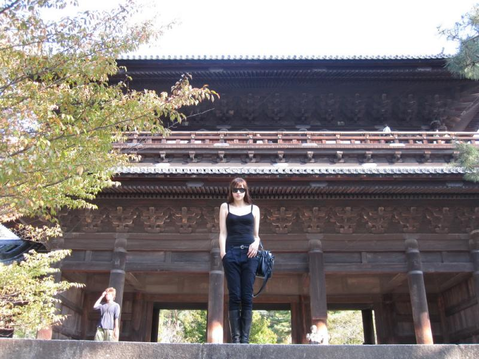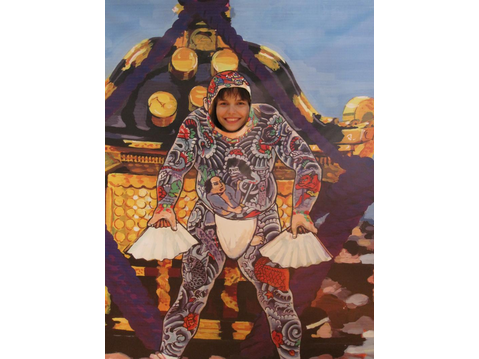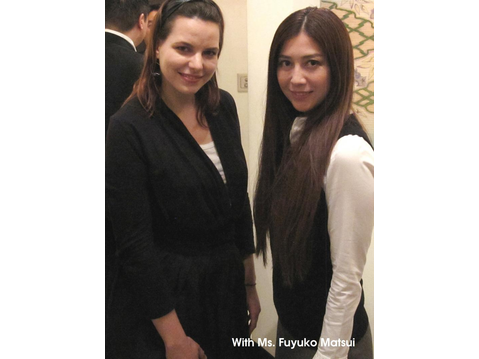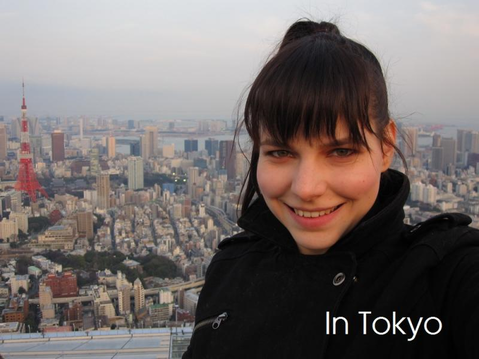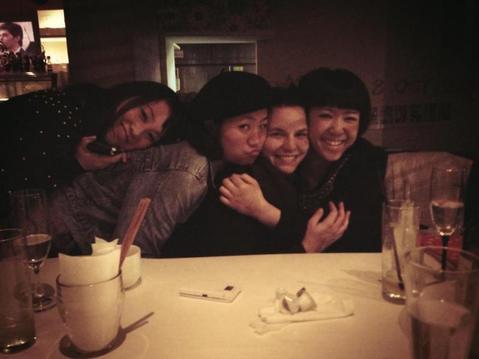Student Story: Case of Eva Miskelova
Dec 17, 2012 (Mon.)
Eva Miskelova, a Comparative and Art Studies major at Masaryk University in Czech Republic, came to Kansai Gaidai University (KGU) as an exchange student in August, 2011 and has just completed her rewarding three-semester study in the Asian Studies Program.
“I had four universities in Japan which I could choose from, but KGU was my first choice because there are a variety of interesting courses in art and other fields here,” said Eva. Taking advantage of the wide selection of courses at KGU, she took not only art-related courses but also anthropology, psychology, Japanese religion, etc. to learn about a various aspects of Japanese art and culture.
One of the highlights of Eva’s achievements at KGU is her final project for Dr. Steven Fedorowicz’s Visual Anthropology of Japan course in Fall 2011. Encouraged by Dr. Fedorowicz to use her creativity, she put together a variety of footages and effectively presented various aspects of the Japanese tattoo in form of short movie projected on the outside wall of the Center for International Education building. Eva said, “I was very satisfied with that final project. It completed my research about the Japanese tattoo which I had been working on since a few years ago, and I was able to move onto the next stage.”
In Spring 2012, given her rewarding experiences in her project last semester, Eva applied for the independent study and was looking for a new subject for research in contemporary Japanese art. To offer more opportunities for Eva to grow as a young scholar and given her ever-growing interest in contemporary Japanese art and culture, Dr. Fedorowicz suggested that she meet with Dr. Paul Berry, an art history professor of KGU with extensive knowledge in traditional and contemporary Japanese art. Dr. Berry then introduced her to the work of a rising contemporary Nihonga (Japanese painting) artist, Fuyuko Matsui. This encounter gave Eva great inspiration and excitement, and she was fascinated by Matsui’s unique style mixing traditional Japanese motif of beautiful women with dark atmosphere of psychological delusions expressed in physical form and context of Japanese society from a female view. She immediately started doing research on Matsui and decided to stay for the third semester to work with Dr. Berry to deepen the research.
Toward the end of the Spring 2012 semester, Eva applied for a grant program sponsored by the Society for Japanese Arts in The Netherlands. Recognizing potential to be an interesting research project, the Society has accepted her proposal and awarded a grant for her research. “It was very encouraging for me that my research project was recognized by an international organization. This grant was a great financial help and made it a lot easier to do research, especially when I conducted an interview with Matsui in Tokyo.” With the assistance from the Society of Japanese Arts and under supervision of Dr. Berry, her research project proceeded well, and Eva looks forward to continuing her research about this artist for her Master’s thesis after her return to Czech Republic.
In addition to these achievements, given her successful educational career at KGU, Eva was invited by Dr. Fedorowicz to work with him and two other KGU professors and present at the Anthropology of Japan in Japan Fall Conference earlier this month. “It was a great experience that I was able to join the team of the talented professors and be one of the presenters at a professional conference,” said Eva. More information on this conference can be found in one of the previous articles in this website.
Aside from the academic studies, Eva also enjoyed KGU’s premier location. “I like KGU’s proximity to Kyoto. I went there many times.” The city of Kyoto and its surrounding areas are a museum in themselves. Having easy access to these places must have been a great advantage for art students, like Eva.
Finally, Eva sends a message to international students coming to Kansai Gaidai in the future, “I would like to encourage them to go out and do some research or project about aspects of Japanese culture that interest them. KGU’s professors are very accessible and always willing to offer additional assistance to help students achieve their goals. I feel that I cannot express enough gratitude to all professors that helped me or supported me during my studies here.” KGU certainly supports Eva’s point and hopes that future students keep this important advice in mind while studying here.
Masaryk University and Kansai Gaidai University signed the exchange agreement in 2001. Since then, more than 20 students from both institutions have participated in this exchange, which makes this agreement one of the most active exchange agreements in Europe. One of the Masaryk University alumni who participated in this exchange now works as an exchange coordinator in the international office there, and another one is now a professor of Asian Studies at Masaryk.
KGU has been enjoying the privilege of welcoming a number of talented students from around the world for over 40 years. We look forward to continuing to serve as host for promising international students in the future.

